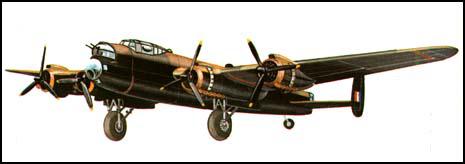Avro Lancaster
In September 1936 the Air Ministry published specifications calling for a twin-engine bomber to be powered by Rolls Royce engines. A. V. Roe & Company took up the challenge and developed the Avro Manchester. The company built 200 but it was not a success.
In 1940 the aircraft was redesigned. The new aircraft, called the Avro Lancaster Mk I, made its first flight on 9th January, 1941. Powered by four Rolls-Royce Merlin engines, it had a maximum speed of 287 mph (462 km) and had a range of 1,660 miles (2,670 km). Armed with ten machine-guns it could carry 22,000 lb (9,980 kg) of bombs. It was 69 ft 6 in (21.18 m) long with a wingspan of 102 ft (31.09 m).
The Lancaster soon became Britain's most successful strategic bomber of the Second World War. The demand was so great that A. V. Roe & Company could not cope and Austin Motors, Vickers-Armstrong and Armstrong-Whitworth also began producing the plane. Over the next five years a total of 7,377 aircraft were built.
In 1943 A. V. Roe & Company introduced the Avro Lancaster Mk II. The new aircraft, with its Bristol Hercules engine, was slower than the original version, but importantly now had a range of 2,250 miles (3,620 km). The company also built the Lancaster Mk IB Special that had modified bomb-bays that enabled it to carry 10 ton bombs such as the Grand Slam.
During the war Lancasters carried out a total of 156,000 missions and dropped 608,612 tons of bombs. This was double what the Handley Page Halifax, the other major bomber used by the Royal Air Force achieved. In the four years of combat service 3,249 Lancasters were lost in action and another 487 were destroyed or damaged while on the ground. Only 24 Lancasters completed more than 100 successful missions.

Primary Sources
(1) Primo Levi, Survival in Auschwitz (1947)
Last spring the Germans had constructed huge tents in an open space in the Lager. For the whole of the good season each of them had catered for over 1,000 men: now the tents had been taken down, and an excess 2,000 guests crowded our huts. We old prisoners knew that the Germans did not like these irregularities and that something would soon happen to reduce our number.
